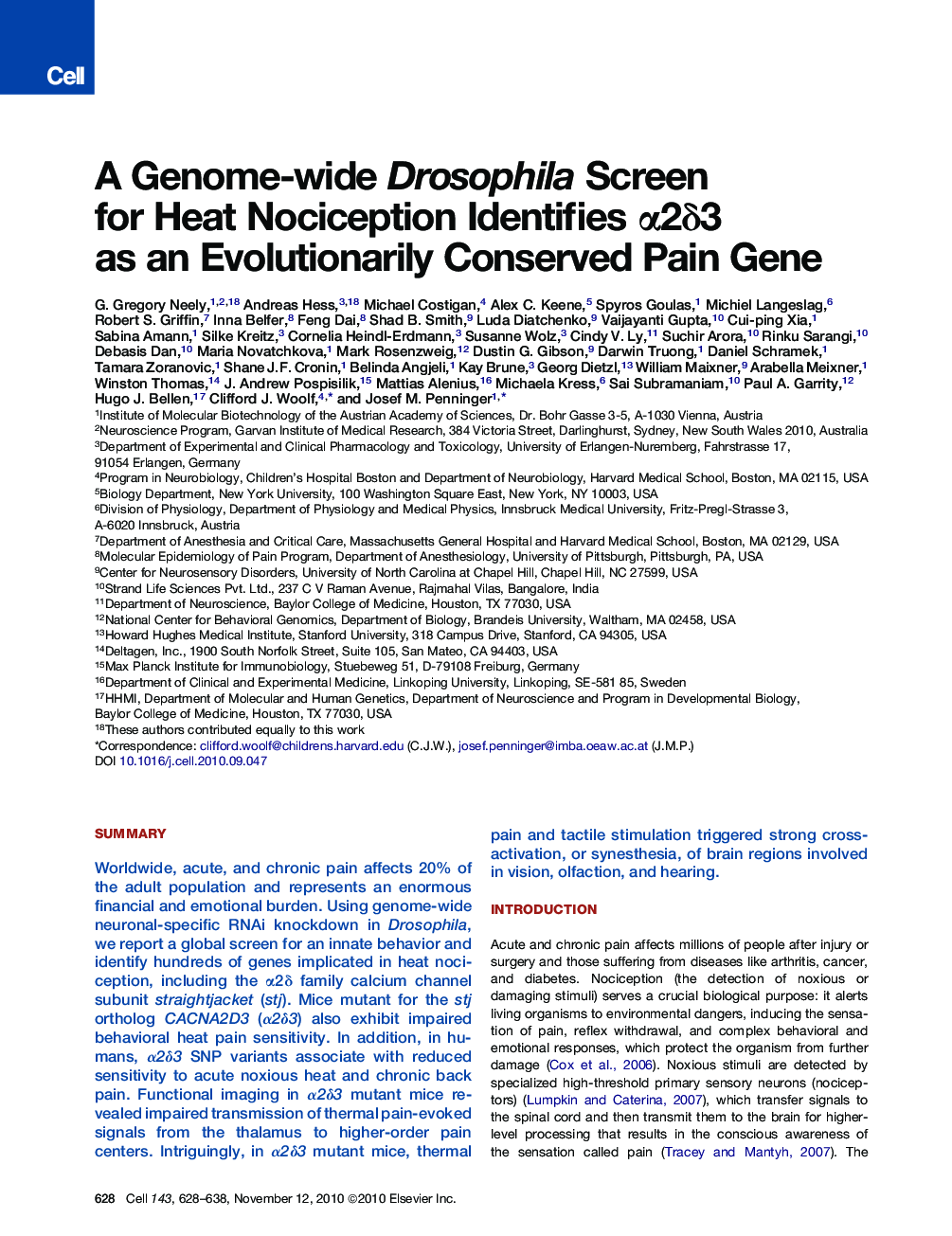| کد مقاله | کد نشریه | سال انتشار | مقاله انگلیسی | نسخه تمام متن |
|---|---|---|---|---|
| 2036509 | 1072268 | 2010 | 11 صفحه PDF | دانلود رایگان |

SummaryWorldwide, acute, and chronic pain affects 20% of the adult population and represents an enormous financial and emotional burden. Using genome-wide neuronal-specific RNAi knockdown in Drosophila, we report a global screen for an innate behavior and identify hundreds of genes implicated in heat nociception, including the α2δ family calcium channel subunit straightjacket (stj). Mice mutant for the stj ortholog CACNA2D3 (α2δ3) also exhibit impaired behavioral heat pain sensitivity. In addition, in humans, α2δ3 SNP variants associate with reduced sensitivity to acute noxious heat and chronic back pain. Functional imaging in α2δ3 mutant mice revealed impaired transmission of thermal pain-evoked signals from the thalamus to higher-order pain centers. Intriguingly, in α2δ3 mutant mice, thermal pain and tactile stimulation triggered strong cross-activation, or synesthesia, of brain regions involved in vision, olfaction, and hearing.
Graphical AbstractFigure optionsDownload high-quality image (333 K)Download as PowerPoint slideHighlights
► Whole-genome in vivo RNAi screen for noxious heat avoidance in Drosophila
► Identification of α2-δ as a “pain” gene in fly
► Mouse and human homologs of α2-δ (α2δ3) are also pain genes
► Loss of α2δ3 in mice results in sensory cross-activation, or synesthesia
Journal: - Volume 143, Issue 4, 12 November 2010, Pages 628–638